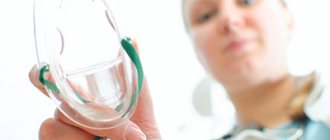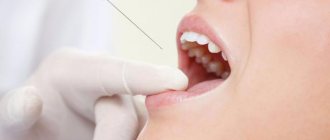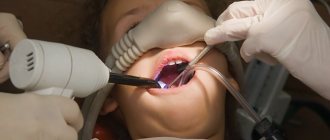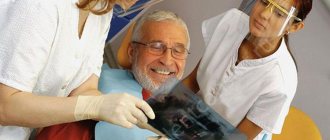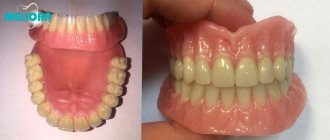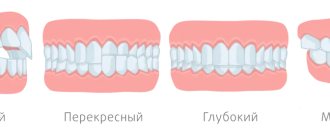Dental treatment under anesthesia has long been common practice in dental clinics. Painlessness of all therapeutic and restoration measures is an important criterion in modern dental practice.
However, the concept of general anesthesia is often confused with sedation , which is used in most cases for any corrective work to restore the dentition. The difference between sedation and general anesthesia is quite significant, which should be understood by every client of a dental clinic.
Important! Do not compare or identify two completely different technologies used for different types of treatment in different clinics. Calmly research the issue on the Internet. Don’t let yourself be outwitted, anesthesia and sedation are different in the drugs, depth of immersion and postoperative aftertaste of the procedure.
There are certain indications and a number of contraindications for general anesthesia in dentistry.
The essence of sedation is to eliminate psycho-emotional discomfort, fear of an unpleasant procedure, as well as to ensure complete relaxation and a mild form of sleep. When using this method, the patient partially retains consciousness, reaction to verbal stimuli, the ability to contact others and all physiological reflexes. Also, sedation does not exclude the use of local anesthetics, since its effect on pain practically does not apply, that is, it is likely only a slight increase in the pain threshold.
There are several types of medicinal sleep that are actively used in dentistry, namely:
- Fast and reliable . Intravenous sedation, characterized by a rapid onset of a calming effect with a duration of no more than 20-30 minutes, which is quite sufficient for most dental procedures of an invasive and non-invasive nature (for example, treatment of caries);
- Quickly and very briefly . Inhalation type of sedation is considered the simplest, most proven, safest and most suitable for dental treatment in all age categories, starting from children 3 years of age;
- It takes a long time to set in and is not suitable for everyone. Happy pills. The use of sedatives orally is used much less frequently due to the long-term onset of the necessary relaxation of the patient and not always obtaining the desired result.
All of the listed methods of putting a patient into artificial sleep are fundamentally different from the general anesthesia procedure in all respects. There is a fine line only between complete loss of consciousness and deep sedation, which is carried out according to a special algorithm and the same principle by an anesthesiologist in strictly defined conditions with the presence of special equipment and medications in case of any extension of the operation in time.
- Sedation - no need for intubation, light medications, quick way out of sleep - go home.
- Anesthesia - tests, drugs, hospitalization - one-day ward after surgery.
Concept of general anesthesia
General anesthesia also involves the professional actions of an anesthesiologist aimed at artificially introducing the patient into a state of deep sleep with the help of potent drugs used only in anesthesiology. At the same time, the activity of the central nervous system is reduced as much as possible, which is accompanied by a complete absence of pain, any reaction to irritating factors and partial elimination of reflexes. It could be a narcotic drug.
No matter how sad it may sound, at present, general anesthesia with mandatory hospitalization is now mainly carried out only in public clinics, motivated to retain the patient for several days to simulate statistics with a huge hospital load on “bed-days” and the formation of a bonus fund doctors, as these are the rules now.
However, time does not stand still and now a modern operating room in a specialized non-state dental clinic, which involves the use of general anesthesia in its work, is always provided with the following medical attributes:
- artificial lung ventilation device;
- availability of centralized oxygen supply;
- laryngoscopes, blades of various sizes and endotracheal tubes of all sizes;
- monitors for continuous monitoring of all vital signs, that is, blood pressure, heart rate and blood oxygen saturation (saturation);
- subclavian catheters and related accessories;
- defibrillator and never need it again;
- drugs to provide emergency assistance in the event of any acute situations, which is more likely during general anesthesia (adrenaline, atropine, refortan, stabizol, dopamine, mezaton);
- medical equipment that ensures comfortable work for the anesthesiologist (manipulation table, fluorescent lamp, infusion pump, disposable consumables, intravenous catheters, disposable systems in sufficient quantities).
Are there alternatives to dental treatment under general anesthesia?
Of course, modern dentistry is ready to offer patients alternatives to dental treatment under anesthesia. First of all, this is local anesthesia, secondly, dental treatment while sleeping, under sedation. Sedation is a light medicated sleep in which the patient does not feel pain, but is not unconscious, he can even respond to the dentist’s requests and carry them out.
Dental treatment under anesthesia is indicated mainly when the patient has a strong panic fear of dentists, when performing complex types of surgical interventions.
If you just have to cure caries, but you still can’t cope with your anxiety, tell your doctor about it. The specialist can premedicate you with a sedative, which will remove unnecessary anxiety before treatment. Which option to choose for truly painless dental treatment? This issue should also be discussed with your doctor.
Treatment under general anesthesia (anesthesia) - carried out only for special indications
Treatment under general anesthesia (Narcosis) is carried out only for special indications, when the risk justifies the result of a large-scale recovery process due to extensive surgery, a high degree of trauma and, accordingly, severe pain. For example, for jaw fractures, tumor removal. Sedation is safer.
Levin Dmitry Valerievich
Chief physician, Ph.D.
For minimally invasive dental procedures, local anesthetics are used for pain relief along with light sedation, which is the safest, does not require additional training and long-term restoration of all functions of the nervous system by our full-time neurologist.
General anesthesia in dental practice
The advantages of general anesthesia over local anesthesia include:
- absence of discomfort and negative psycho-emotional sensations - the patient does not feel the actions of the doctor, does not smell the odors of medications or the noise of a working drill;
- reduction in treatment duration - in one session the dentist can perform a larger volume of manipulations, which reduces the total number of visits to the dentist;
- the ability to treat diseases of the dental system in case of intolerance to local anesthetics - general anesthesia in this case is the only available way to get dental help.
A guarantee of the absence of pain, panic and stress is the main advantage of general anesthesia. Treatment under anesthesia eliminates negative emotions and fear in the patient, and the doctor can perform manipulations in calm conditions, which reduces the risk of accidentally injuring the gums or buccal mucosa.
Under general anesthesia, more teeth can be treated or removed than with local anesthesia. That is why this type of anesthesia is recommended when performing particularly complex and extensive dental treatment.
By providing dental care to a patient under general anesthesia, the doctor can fully concentrate on doing his job. He does not waste time and energy on overcoming the patient’s negative reactions, thanks to which he performs manipulations more carefully and efficiently. Therefore, therapeutic intervention is more effective.
After the completion of dental procedures, the patient is woken up, having previously excluded from the visibility zone everything that could cause fear and stress. When the patient wakes up, he does not see dental instruments, swabs with blood, or other evidence of the treatment performed. This means that a person does not experience negative emotions and does not need psycho-emotional recovery after visiting the dentist. The absence of stress also has a positive effect on the patient’s well-being during the rehabilitation period.
Tooth extraction under general anesthesia is characterized by a significantly lower number of complications. This is due to the fact that the doctor performs the manipulations in comfortable conditions and has more time for them than when using local anesthetics. For this reason, it is recommended to remove complex “eights” and multi-rooted chewing teeth not under local anesthesia, but using general anesthesia.
After treatment under general anesthesia, there is no burning, tingling, or pain, which is typical when using local anesthetics. In addition, the risk of complications such as spasm of the masticatory muscles, neurosensitivity disorders, and facial nerve paresis is eliminated.
Advantages
Of course, the main advantage of general anesthesia is the complete absence of any patient movements, which lengthen the operation and complicate the doctor’s actions. In addition to this fact, there are a number of other advantages of dental treatment in a completely unconscious position, that is, the following:
- relevant for super-traumatic procedures, the patient does not feel compression, vibrations or other tactile stimuli at all;
- absence of any pain after the procedure, which is due to the long residual presence of the drug in the blood;
- minimizing the risk of postoperative complications, since the doctor is not distracted by the patient’s reaction, which can be quite different if anesthesia or at least sedation is not used;
- decreased saliva production, which is ensured by special medications;
Despite all the advantages of general anesthesia, its use is indicated only in certain cases, in contrast to sedation, which is used at the request of the patient in the dental office, even when the procedure is minimally invasive.
Important! When performing sedation (not anesthesia), the anesthesiologist always ensures maximum psycho-emotional comfort, since he excludes specific micro-irritants from the child’s memory: white coats, smells of the dental operating room, noise effects, medical sounds and visual stimuli;
Under sedation, it is possible to perform any full-scale operation to restore the dentition (bone grafting, ENT surgery, implantation using sinus lift surgery, prosthetics).
Examination before anesthesia
Before carrying out all actions involving general anesthesia, the patient undergoes a full examination, during which the doctor determines:
- a complete list of necessary procedures,
- their standard time
- as well as the individual characteristics of the patient.
Based on these data, the anesthesiologist calculates the required doses of a particular drug, and the patient finds out the total cost of all work.
Dentistry under general anesthesia solves many problems that the patient has. With quality care, in some cases it is preferable to local anesthesia.
Indications for general anesthesia
Some cases in practical surgery and dentistry are a direct indication for the use of general anesthesia during therapeutic procedures. However, even if they are available, the use of anesthesia raises many doubts and questions about the general health of the patient, which may have contraindications. To eliminate all risks, the patient undergoes a certain examination of the body, based on the results of which the doctor decides on the advisability of this type of anesthesia.
The following types of dental treatment can be performed under sedation or general anesthesia:
- extraction of 3 molars, which are located in the jaw bone in an extremely complex manner, which involves drilling and crushing tooth tissues and roots, which have a complex and tangled structure;
- bone grafting with immediate implantation;
- the need for prosthetics or implantation of several dental units;
- one-stage removal of several teeth;
- elimination and treatment of a large volume of carious lesions on the dental surface;
- injuries of the maxillofacial apparatus, requiring a large scale of restoration work;
- treatment of advanced forms of pulpitis or widespread periodontitis;
- surgeries on the temporomandibular joint;
- a burdened allergy history, which does not allow treatment with local anesthetics;
- the patient has a pronounced gag reflex;
- insurmountable fear of dental procedures, accompanied by characteristic sounds, smells and tactile sensations;
- the patient has severe mental illness (schizophrenia, mental retardation);
- children under 3 years of age, which is due to inadequate patient contact and the presence of a large volume of dental work;
- genetic pathologies (autism, Down syndrome);
- patients with somatic pathologies in a compensated state to prevent exacerbation, for example, hypertension or neurasthenia;
- epilepsy.
In cases of treatment in government institutions with a hospital, you will always be persuaded to undergo treatment under anesthesia followed by hospitalization, since this is strictly regulated by the internal regulations of hospitals.
In paid non-state clinics, all these types of treatment will be carried out only under sedation and without hospitalization, since there is no need to extend the stay and duration of treatment.
The list of indications is quite large, but it may have limitations. Whether it is possible to treat teeth under anesthesia in a particular case will be determined only by an experienced anesthesiologist, who must be on the staff of specialists in a modern dental clinic that provides comfortable and effective service.
What is better not to do before dental treatment?
Most likely, nothing serious will happen to you, but professionals still do not recommend doing certain things before your scheduled visit to your dentist.
- You cannot drink alcoholic beverages. Even if you are very worried and worried about the outcome of the operation, you should not relieve stress with strong drinks. 12 hours before taking them you should completely exclude them.
“Alcohol and anesthesia are incompatible!”
- It is strictly not recommended to arrive with an empty stomach. On the contrary, you should definitely eat a hearty meal, because after many dental procedures, the doctor prohibits eating for at least several hours.
- You should not take strong sedatives and painkillers, especially without a prescription. This is due to the fact that anesthesia and similar pain-relieving pills affect the same nerve endings, but in completely different ways. Therefore, the anesthetic may not work as effectively or may not help at all. 6 hours before treatment, completely stop taking pills; in extreme cases, you can drink chamomile tea. But if your personal doctor nevertheless prescribed you to take a painkiller, then it is better to follow his advice and purchase exactly the drug he recommended.
Contraindications
Even with the use of modern anesthesia, which is due to excellent tolerability, a minimal percentage of complications and side effects, general anesthesia has a number of strict contraindications. The need for a one-stage large-scale correction of the dentition can delay or even make the presence of severe pathologies or certain physiological conditions inaccessible.
Thus, the following situations are unconditional contraindications for general anesthesia in dentistry:
- severe pathologies of the cardiovascular system in the acute and subacute period (myocardial infarction, cardiomyopathy, cardiac arrhythmias of various etiologies, uncompensated heart failure);
- dysfunction of the respiratory system (bronchial asthma, pneumonia, chronic obstructive pulmonary disease in a severe clinical stage), which is characterized by complete or partial obstruction that disrupts normal breathing;
- acute cerebrovascular accidents;
- the presence of acute infectious diseases;
- pregnancy in the 1st and 3rd trimester;
- state of alcohol or drug intoxication;
- consuming food and drinks before the scheduled procedure;
- psychiatric diseases in the acute period.
Some contraindications can be considered relative, since they can be easily eliminated, which in the future will allow dental correction to be carried out in full and painlessly, thanks to the effects of general anesthesia. Recommendations for preparing for the upcoming operation will definitely be given by the anesthesiologist at the clinic where treatment and dental restoration are planned.
Purpose of general anesthesia in dentistry
General anesthesia is a rather complex and highly responsible intervention in the human body, and therefore requires fundamental knowledge and experience of a highly qualified specialist, modern technical and drug support, as well as appropriate hospital conditions.
All dental clinics that plan to conduct any types of treatment under anesthesia must have a license to provide these services. Ideally, general anesthesia should only be used in a hospital setting, with an intensive care unit or ward available in case of any complications.
The task of the anesthesiologist is to provide the following conditions to the patient:
- analgesia;
- amnesia;
- neurovegetative protection;
- the most convenient conditions for performing dental procedures that are invasive and traumatic.
The anesthesiologist's first priority is always maximum patient safety, avoiding complications and preventing the consequences of anesthesia. It should be remembered that general anesthesia is always associated with a certain percentage of risk, although in modern practice it is extremely small.
Types of anesthesia drugs
It is important to understand that we should not be talking about general anesthesia, but about general anesthesia. Anesthesia differs only in the types of drugs, and, accordingly, in the types of effects on a person. By changing dosages, the anesthesiologist selects the ratio of certain drugs in order to maintain a balance between the desired result and the patient’s health.
In dentistry, not every clinic has permission to perform procedures under general anesthesia. The therapeutic department of dentistry "A.Dent" has permission to carry out these procedures. Several types of anesthesia are used. Old drugs that put a serious strain on the body are used extremely rarely.
Nowadays, modern pharmacology provides a wide choice of anesthesia, from opiates to sleeping pills and muscle relaxants.
Types of anesthesia used in dental practice
The type of anesthesia that the anesthesiologist will choose depends on the scale and trauma of the planned dental operation. There are several ways to put the patient into a state of complete or partial loss of consciousness for the purpose of comfortable and painless correction of the dentition.
Depending on the specific situation, anesthesiologists use the following types of anesthesia:
- Combined endotracheal anesthesia is used in cases where extensive operations on the maxillofacial apparatus are planned or there is a threat of obstruction of the upper respiratory tract due to changes in the anatomical relationship of the tissues of the nasopharynx;
- The inhalation type provides peace of mind to the patient during a short and minimally invasive process of treatment and restoration of dental elements;
- Intravenous mononarcosis provides short-term anesthesia, but, if necessary, the effect can be extended;
- Combined or multicomponent injection of drugs into the bloodstream (total anesthesia) in order to provide an anesthetic barrier in time, for example, when a dentist performs bone grafting, implantation, or complex wisdom tooth extraction.
To the question of whether it is possible to treat teeth under general anesthesia, there is an exhaustive positive answer. Even if there are contraindications, the anesthesiologist will definitely find a way to make a visit to the dentist comfortable and painless. Most often in dentistry, a combined intravenous type of anesthesia is used, in which several drugs are administered in a certain sequence to achieve the safest and deepest drug-induced sleep, reduce the likelihood of side effects and prevent postoperative complications from the central nervous system.
Sedation in dentistry for children and adults –
As we said above, sedation is the general strong calming of the patient, in which he is on the verge of sleep. During sedation, the patient is able to perform simple actions at the request of the doctor (for example, opening his mouth) - although patients do not remember any of this afterwards. The big advantage is that sedation has no contraindications and is much easier to tolerate.
Dental extraction and treatment under sedation is much safer than under general anesthesia. For example, sedation can be performed on a patient every day (without harm to health), and there is no mortality from it. The patient wakes up just a few minutes after the end of the drug administration, and all patients immediately orient themselves well in space and move normally. Sedation is carried out by inhalation or intravenous route, or a combination of both.
The inhalation route of administration is not very convenient for interventions in the oral cavity. The most inexpensive option for inhalational sedation is the use of nitrous oxide; the drug Sevoran (sevoflurane) is much more effective. But if the latter already immediately has both a sedative and analgesic effect, then in any case, either local anesthesia or a narcotic analgesic will have to be added to nitrous oxide. The most modern version of sedation is intravenous sedation with the drugs Midazolam and Propofol (diprivan).
Drugs for intravenous sedation –
Of all the possible drugs for intravenous sedation, Midazolam and Propofol are the most modern and safe. Their administration causes depression of consciousness within 20-40 seconds. If a patient is planning to have teeth filled under sedation, then very often they are premedicated with a diphenhydramine solution (this is especially important in children). The latter contributes to a sharp decrease in salivation, which is very important for high-quality dental fillings.
- Midazolam belongs to the class of benzodiazepines and is preferable for short-term interventions.
This drug has several benefits. Firstly, it is the shortest-acting benzodiazepine, which allows the anesthesiologist to make sedation as manageable as possible. The anesthesiologist will continually add small amounts of the drug during the treatment or tooth extraction process. The second advantage is that patients during shallow sedation with midazolam are even able to communicate with the doctor during treatment and follow his commands, but after the end of treatment they do not remember at all that the treatment was carried out. Those. the patient does not remember anything from the moment of the intravenous injection until he comes out of sedation. Disadvantage – it belongs to drugs from “list B”, and therefore requires additional permits.
- Propofol (Diprivan) is a hypnotic that is intended for intravenous administration. It is a fairly expensive drug, so it is not used very often in Russia (although it is one of the most popular drugs in the world). Awakening from propofol sedation occurs more quickly and with fewer residual reactions than most other drugs.
Important: It should be noted that sedation and analgesia are not the same thing. Sedation involves turning off fear and anxiety, and at the same time the patient will be conscious (on the verge of sleep). Moreover, if a painful intervention is planned, then the patient under classical sedation with nitrous oxide, propofol or midazolam will feel pain. Therefore, in their pure form, these drugs are used only for those interventions that are not capable of causing pain. In other cases, analgesics are added to them.
Therefore, it is worth distinguishing between “conventional sedation” and “sedation with analgesia.” The first allows you to cope only with stress and fear of dental intervention, the second is also aimed at pain relief. To achieve pain relief, intravenous sedation drugs are combined, for example, with ketamine. Or you can immediately use an inhalation drug such as Sevoran (Sevoflurane), which has both a sedative and analgesic effect (24stoma.ru).
General anesthesia and sedation in dentistry for children - reviews
Dental treatment under sedation in children is possible at any age.
The anesthesiologist selects a drug for sedation based on the child’s age, physical activity, and level of aggressiveness. When only sedation (without pain relief) is required, it is better to use Propofol in children of any age. If sedation with anesthesia is required, use a combination of propofol with ketamine, or the inhalation anesthesia drug Sevoran. Separately, we note that inhalation anesthesia with Sevoran is not used for infants, and therefore either pure Propofol or a combination of propofol with ketamine will be indicated. Sedation in dentistry for children has the most positive reviews from parents, allowing them to neutralize the child’s fear of intervention, as well as sanitize the entire oral cavity - most often in just 1 visit to the dentist. However, if long-term interventions are necessary, preference will be given to general anesthesia, or sometimes a combination of both.
Sedation in dentistry in children: video (video 1 – child’s behavior during shallow sedation and recovery from it; video 2 – intravenous sedation).
Complications after general anesthesia
Modern medications and technical equipment are at the highest level in anesthesiology, but there is always a risk of any complications, which patients should know, doctors should take into account and warn. Each human body is individual and, under certain conditions, unpredictable, so it is difficult to give a 100% guarantee of the successful completion of any surgical operation that was accompanied by general anesthesia.
In the practice of anesthesiologists, the following types of complications are encountered, which, in most cases, are noted during the recovery of consciousness after using a drug for anesthesia:
- dizziness, nausea, vomiting;
- psychomotor agitation and confusion;
- severe headache;
- trembling throughout the body;
- muscle pain (back, neck, limbs);
- severe allergic reactions;
- injury to the tongue, lips or teeth (usually characteristic of endotracheal anesthesia);
- infection of the lower respiratory tract, which occurs due to incorrect tracheal intubation;
- fluctuations in basic vital signs (blood pressure, pulse, saturation).
There is also a rate of severe brain damage and mortality, which necessitates the presence of resuscitation equipment and appropriate medications. Informed patients must make their own decision about whether to treat their teeth under general anesthesia , since the doctor cannot guarantee absolute well-being. The best prevention of these excesses is considered to be thorough preparation of the patient, exclusion of contraindications and compliance with all doctor’s recommendations. Modern anesthesia in dentistry reduces the rate of complications to a minimum.
Important! None of these types of anesthesia are used in our clinic, only sedation.
Important! Establishing, licensing and maintaining a full-fledged anesthesiology department requires huge monthly costs.
People usually criticize and dissuade from performing sedation only in those clinics where Rospotrebnadzor issued a refusal and failed to obtain accreditation for this type of licensing.
PART I
Answered by Konstantin Vladimirovich Artamonov, leading anesthesiologist-resuscitator at the children's dental clinic "Malysh and Carlson."
Tell me, at what age can general anesthesia be used for dental treatment in children?
There are no age restrictions for treatment under general anesthesia. For example, under general anesthesia, reconstructive operations are performed for congenital anomalies of the structure of the maxillofacial region, for example, cleft palate in children in the first months of life.
In our clinic, we treat dental diseases for children aged one and a half years and older under general anesthesia. We recently treated decayed upper front teeth of a nine-month-old baby. The parents brought the child from abroad, since such treatment is not provided there.
On the websites of leading children's dental clinics they literally praise sevoran anesthesia, but not a word is written about its shortcomings. Tell me, does the drug Sevoran really have any disadvantages?
It would be incorrect to say that Sevoran (sevoflurane) is an ideal drug in anesthesiology. There is simply no ideal drug. However, Sevoran anesthesia (ABBOT Laboratories USA) really has virtually no side effects. Due to the low solubility of the drug in the blood, administration and removal from anesthesia occur quite quickly, which reduces the metabolism of the drug in the body to a minimum. And in the process of metabolism, non-toxic products are formed (unlike other inhalational anesthetics).
Side effects of Sevoran include dizziness upon awakening, which persists for about 30 minutes, as well as rapid restoration of pain sensitivity after recovery from anesthesia (therefore, local anesthesia is required for traumatic procedures), nausea and vomiting may occur.
In genetically predisposed patients, skeletal muscle hypermetabolism syndrome (malignant hyperthermia syndrome) may occur, the incidence rate is 1:50,000 - 1:100,000 (according to statistical data from various Russian and foreign sources).
Please help me figure out which anesthesia is safer for a child: inhalation or intravenous.
The choice of anesthesia is determined by a combination of factors, primarily the general somatic status of the patient and the scope of the upcoming treatment. Dental treatment in children on an outpatient basis is possible both using inhalation anesthesia with Sevoran (general anesthesia) and intravenous anesthesia with propofol (superficial and deep sedation) with the same degree of safety. Patient safety in our clinic is ensured by the use of modern anesthesia and respiratory equipment and hemodynamic monitoring. The anesthesiologist selects an individual dose of the drug for each child, which means that the little patient receives exactly the amount of anesthetic that he needs.
How does a child fall asleep?
The use of inhalational anesthetics during general anesthesia is all the more preferable for children because to induce anesthesia you just need to breathe through a mask, and in the case of intravenous anesthesia, you must have an intravenous catheter. Therefore, in our clinic, if there are no contraindications, inhalation anesthesia with sevoflurane is used, and an intravenous catheter is installed during sleep (for transfusion of the necessary drugs).
During anesthesia, the child does not feel pain during treatment and tooth extraction, but what sensations will he have after waking up?
Sevoran has a sufficient analgesic effect for dental treatment. Indeed, pain sensitivity is restored quickly after waking up - this is one of the few disadvantages when performing inhalation anesthesia with Sevoran. Therefore, when removing teeth under anesthesia, our pediatric dentists additionally perform local anesthesia, trying to carry out traumatic manipulations at the beginning of treatment in order to reduce the baby’s discomfort after waking up. In addition, preemptive analgesia is administered intraoperatively before treatment. In the postoperative period, non-steroidal painkillers (nurofen or paracetamol) are prescribed in age-specific dosages.
How will the child feel and behave after recovery from anesthesia? On the websites of clinics offering dental treatment under anesthesia, they mostly write that after 20 minutes the child is running and playing. Is it so?
The child’s well-being and behavior after general anesthesia depends on several components.
Firstly, the initial psycho-emotional status of the child.
Including previously acquired negative experience of dental treatment “with retention”. Often parents decide to undergo dental treatment under anesthesia when the situation in the child’s mouth is simply catastrophic. There are many inflamed and damaged teeth in the oral cavity. Naturally, when a baby does not sleep for several nights, suffering from toothache, he practically does not eat, and he feels unwell.
Secondly, the volume of dental treatment performed and the duration of anesthesia treatment.
Naturally, when several pulpitis are treated (nerves are removed and canals are filled) and severely damaged tooth crowns are restored, and in some cases tooth extraction cannot be avoided, the child will experience discomfort when waking up. Often, after a long treatment (more than three hours), babies cry because they want to eat.
Sometimes after anesthesia, children experience agitation (excitement). This is due to the fact that when a child wakes up in a half-asleep state, coordination of movements has not been fully restored. Since the child is encountering this condition for the first time, it may bother him.
These are the main factors that determine the child’s condition after general anesthesia. I would like to note that the parents’ mood, their anxiety and vigilance, as well as questions like “Do your teeth hurt, are you in pain?” also worsen the child’s mood after waking up. On the contrary, a calm attitude and the ability to distract a child lead to a quick, positive result: the child is calm, drinks water, watches cartoons.
What is preferable for administering anesthesia to a small child: an endotracheal tube or a laryngeal mask?
In the children's dental clinic "Malysh and Carlson" laryngeal masks from LMA are used to ensure airway patency during general anesthesia. The laryngeal mask is made of thin, soft latex. This is what she looks like. Masks of different sizes are selected depending on the patient’s weight.
Its fundamental difference from an endotracheal tube is that it is located only in the oropharynx and does not penetrate the larynx, which prevents irritation of the respiratory tract and trauma to the vocal cords that occur when using an endotracheal tube. That is why general anesthesia using a laryngeal mask is tolerated by small patients much more comfortably than general anesthesia using an endotracheal tube. But in some cases, tracheal intubation cannot be avoided. In such cases, of course, intubation is used (we have everything necessary for this).
